Itching to Scratch
instructed by DJ Kanga
A Free video series of scratch tutorials breaking it down to the fundamentals for you to practice at home!
Curriculum: 52-week course of scratch tutorials carefully curated in a specific order and instructed by DJ Kanga. Starting with the first scratch invented, baby scratch. This curriculum progresses to more difficult and technically challenged scratches every week. Each tutorial averages a minute long - so you get right to the important material without wasting any time scrubbing through unnecessary lectures.
PRO TIPS
It may sound trivial, but practicing this technique will help you achieve more variations in your cuts. Push or pull the record very slowly, oftentimes using the entire length of the sound. Work on slow pushes and pulls but fast changes in direction.
This cut always impresses people, even though it is not too difficult once you’ve got it down. Try to tense your arm muscles so hard that your arm shakes; almost imagine yourself shivering. The goal is to achieve a very fast baby/rub, almost vibrating, scratch effect.
This is a great technique to stay in time (or on the beat of the music) while transitioning between scratches. Drills are fast babies immediately after a pull back, usually to a record release (when you lift your hand off the record).
This scratch can be difficult to get right, but it can sound and look really cool when done well. Flick the record quickly back and forth, using either thumb and index finger or just index finger. It helps to use longer, more consistent scratch samples like tones or ahhhhs.
These can add some really cool off-beat cuts to your repertoire. Space bubble taps between more complicated and intricate cuts. Lightly tap the record as it moves forward to achieve a stuttering sound. Try varying how many times you tap during the scratch sample and for how long you stop the record with the tap.
Another flashy two-handed scratch. While holding the record with one hand, use the other hand to push the record forward, creating a very sharp/staccato sound. Can be used to create a “pew pew” laser gun type effect.
A two-handed technique that achieves four sounds. While doing consistent babies, use your other hand to “swipe” across the record in the opposite direction the record is moving. Creates a more rounded/legato “1 click-flair” sound.
A flashy two-handed technique that creates a 2 Forward/1 Back Tear combo. Using both hands, release the record with one hand, pause it halfway through the sound with the opposite hand and then pull back with the hand you started with. Looks like you are doggy paddling the record.
These can be great finishers to a routine or set of scratches. Scratch immediately after turning the power off to the platter, without using the start/stop button. Creates a “slowing down” effect. Can also be done by putting increasingly harder pressure against the platter until it stops.
By using the very beginning of a sound, you can create a sharp/staccato scratch. Start at the dead space between two sounds. It’s easier to identify this space if you’ve put some kind of label/marker on your record. Push the record forward and backward but always return to the dead space. Can achieve the same sound as a “slice” scratch.
This is another foundational scratch that will help you learn more difficult scratch patterns. Try to keep everything from your wrist up completely still and only move the record by opening and closing your hand. Once you feel comfortable with that, try adding in those hand movements with larger arm movements to create more intricacies and variations.
This first tear combo will set you off on creating your own. The goal is to achieve a faderless OG flair by making 1 record movement forward and two, short, record movements back. Creates 3 notes or triplets. Can also be reversed to 2 Forward, 1 Back for a different lick in the sound.
Clover Tears are essentially faderless 1 click flairs. The object is to cut the sound in half by pausing the record with your hand quickly. 2 tears forward, 2 tears backward. This gives a more rounded/legato sound than the 1 click flair but achieves the same number of notes.
One of the most difficult preset tear patterns but can create a really intricate and fast scratch. 2 Forward, 1 Back, 1 Forward, 2 Back tear combo. This is the basis for the Prism Scratch - adding in a two-click flair orbit over top of this combo. Creates 6 notes in a triplet rhythm.
Probably one of the very first scratches to use the crossfader. Starting with the crossfader closed, open and close the crossfader to a certain rhythm/pattern while consistently moving the record back and forth also in time with the beat. Effectively “transforms” the sound into something else.
Our first preset pattern with the crossfader. Start with the crossfader closed and the record at the beginning of a sound sample. As you release the record, move the crossfader towards the middle of its track. As the sound finishes, close the crossfader and then pull the record back to the beginning of the sound. The goal is to only hear the sound playing forward, “Fresh”. You don’t want to hear any of the back cut “Hserf”. Start with whole notes (4 beats long), work to half notes (2 beats) and then quarter notes (1 beat). If you’re feeling up to the challenge try in 1/8th and 1/16th notes. At this speed it helps to always have your hand on the record instead of releasing the record.
Stabs are basically faster versions of the forward scratch. Do the same record and crossfader movements you’d do with a forward, except always keep your hand on the record so you are able to push the record faster. Stabs should be short and sharp.
The fade scratch can be great for intros/outros as well as adding space/variation between faster more complicated techniques. While doing babies/rubs, slowly move the channel/volume fader down and then back up again, fading the scratch in and out. Try consistent babies/rubs at first but then also try fading any scratch like lasers, tears, scribbles, drags, etc.
Similar to the Fade Scratch, the Echo technique uses the channel/volume fader but its movements are more like the forward scratch. The crossfader should always remain on and start with the record at the beginning of a sound. Release the record and as it gets to the end of the sound, turn the channel/volume fader all the way down. While the volume fader is down, bring the record back to the beginning of the sound. When you release the record, move the crossfader back up but don’t go all the way. If you started with fader all the way up at “10” on the next scratch only bring the fader up to ~“7”. On each repetition bring the volume fader lower and lower until it reaches zero. The goal is to only hear the sound playing forward and on each forward decreasing the volume to achieve the way an echo would sound in a large room. This can then also be done the opposite way, starting from zero and working up, to echo the scratch back in.
Exactly like the forward but backward. Start at the end of the sound with the fader closed. Open the fader as you pull the record back and close the fader as you get to the beginning of the sound. Then push the record back to the end of the sound and repeat.
Phrasing is the act of breaking up a sample into either words or syllables by pausing the record with your hand in between each word or syllable. This can be done with or without the fader, but using the fader will give a sharper, cleaner sound. Say we have a sample that says “I can break it down”. To phrase that sample you would add pauses between each word, “I-can-break-it-down”. Some samples might be a little more difficult. “Cut like a guillotine” is a well-known phrasing sample but you can’t really break it up by words or samples. Instead, you need to pick out where you can add pauses so that it can be in time with the beat you are playing to. Such as “Cut-like a-guillo-tine”. “Like a” is technically two syllables but in order for it to sound right, we use it as one. Similarly, “guillotine” is three syllables but to make it fit we treat it as one. Once you’re comfortable separating a given sample try grabbing specific parts to then do other scratches with.
The Twiddle scratch uses the ring and index finger to alternate snapping the crossfader against your thumb. This scratch is a precursor to the Crab Scratch and can be done starting with the crossfader open or closed. The idea is to use your thumb almost like a spring to bounce the crossfader against using your ring and index fingers. The first cut is made with a ring finger and the second is made with the index finger.
The Military scratch doesn’t have a preset rhythm or pattern but is more about creating a certain cadence by combining babies/rubs, forwards and stabs. Try moving the record to a consistent beat and only very where the cuts are being made. The goal is to achieve a “marching” type cadence.
The Rockit scratch is a funkier variation of the Military scratch made famous by Grandmixer DXT on Herbie Hancock’s track “Rockit”. Done with the classic “Fresh” scratch sample, this is more of a structured rhythm of stabs, forwards, chirps and babies. The way DXT is able to repeat the pattern with ease inspired many young DJs to become the legends they are today.
Dicing is basically tearing your transforms. Every time a cut is made with the crossfader you also pause the record. As soon as the cut comes back in you continue. There’s not a set pattern with this scratch, but practicing stopping the record as you make a cut will help you prepare for more advanced techniques.
The chirp is our first “open fader” scratch, so get ready! The chirp scratch starts with a record at the beginning of the sample and the crossfader is open. As you push the record forward, close the crossfader, and as you bring the record back, open the crossfader. The goal is to not hear the record changing direction at the beginning of the sample. This is the first step towards flaring and will eventually allow you to scratch much faster. Whereas transforming would take four crossfader movements to achieve this sound, chirping only takes two.
Joe Cooley is a DJ who made famous a certain pattern of stabs, forwards, and chirps. In a time when many DJs were doing basic patterns and combos, Joe Cooley stood out with this more complex pattern(s).
Slug March is usually performed over a half-time beat, the slug march actually begins at the end of the sound... pulling the record backward. This can achieve a very cool off-beat style pattern using tears, chirps, and flares.
The 1 Click Flare is made famous by DJ Flare, start with the crossfader on/open and as you push the record forward and it reaches the halfway mark of the sample being used, make one “click” (on-off-on) with the crossfader. Continue pushing the record through the “click” to the end of the sound. Time the pull back and repeat the “click” halfway through the sample again, pulling the record back to the beginning of the sample. The objective is to have the forward and reverse movements and sounds be exactly the same, chopping the sample in half. Creating 4 notes.
Spair Flare was made famous by DJ Spair. This pattern sounds a lot faster than it really is. The Spair Flare is executed by adding a small baby scratch to the beginning of a 1 Click Flare. The objective is to have a quick and small enough baby before your 1 Click Flare that shouldn’t affect the timing of your flare but create 2 extra notes, 6 in total.
The chirp flare was invented by D-Styles. It is a more nuanced way of doing Spair Flares and takes an extra crossfader movement but the sound achieved is much sharper. As the name states, the scratch is executed by performing a chirp immediately followed by a 1 click flare. The trick to achieving the right sound is to make a short chirp followed by a long 1 click flare. Makes 6 notes in total. Also called a “squeeze scratch”.
DJs and turntablists read a record like a clock. They do this by putting a mark, sticker, or some other indicator on the middle label portion of the record. As the record spins around, the DJ can listen to the samples playing while viewing the mark on the record, creating a visual reference point for where the various samples begin and end.
Originated by D-Styles, the OG Flare scratch is our first “two click” fader scratch. This fader movement of doing two fast clicks in repetition will be the basis for many scratches to follow. Starting with the fader open, push the record forward and make one click at the end of the sound, just like you would for a chirp. On the back stroke, perform the same movement as a 1 click flare, chopping the sound in half with one click. Makes 3 notes.
Another scratch invented by D-styles, the 2 Click Flare/Orbit makes 2 clicks forward and 2 clicks backwards, separating the forward and backward strokes into 3 sounds each, making 6 notes in total.
Similar to the Spair Flare, the Baby Orbit adds an extra baby scratch at the beginning of a 2 click flare can add two extra notes. The trick is to have a quick baby into a longer two click flare. Makes 8 notes total.
As the name implies, the OG 2 Click Combo scratch is performed by doing an OG flare directly into a 2 click flare. Once again, the trick lies in performing a short OG flare into a longer 2 click flare. Makes 9 notes in total.
The Aquaman scratch is a more spaced-out, accented version of Boomerangs, which we’ll learn next. Start with the crossfader closed and perform a Slice to a forward, ending with the fader closed. Now repeat the same movements except reversed; Reverse slice to reverse pull, ending with the fader closed. The slices, both forward and reverse, should be quicker and shorter than the release/forward and reverse pull in order to achieve the proper timing.
The Boomerang scratch is basically a continuous Aquaman. The trick is to leave the fader open at the end of the forward and reverse record movements. This turns the scratch into a 2 click pattern, starting from fader closed, over continuous babies.
The Autobahn scratch uses a similar record movement to the Aquaman/Boomerang but creates more notes by placing clicks in the middle of the sample rather than on the ends. Start with the fader closed and perform a slice to 1 click forward. Then on the pull back do another click but end with the fader closed - similar to a flare. Makes 6 notes total.
Having the correct height adjustment on your turntable’s tone arm can affect not only the way it plays but also the longevity of your stylus and vinyl. Check out this video to get a better idea of how you might want to setup your tonearm.
The Long Autobahn is like doing two Autobahns back to back, but continuing through the sample. The last pullback of the first autobahn should be shorter than usual so that you can then use the second autobahn to progress through the sample.
The Prism scratch is performed by doing the prism tear with a two-click fader motion over the top. The clicks need to fall on the pauses of the tears, accenting the notes. Makes 6 notes
The Tug Flare adds two extra notes to a two-click flare by adding an extra push and pull at the beginning and end of the sound, respectively. The trick to getting the correct sound is actually starting with the first pull back and lead into a two-click flare.
Anti-skating is something most turntablists won’t use, but it’s good to know what it is and how it works. Knowing your gear inside and out can help you troubleshoot when problems arise and help you tackle whatever obstacles the Dj world has to throw at you.
The Crab/3 Finger Flare scratch is performed by snapping the ring, middle, and then index fingers (in that order) at the crossfader, creating three very fast clicks, separating the sound into four notes. The trick is getting the forward and backward movements to link into a continuous roll.
Maintaining your gear is an essential part of being a DJ. A malfunction of any kind during a set can be detrimental and sometimes hard or impossible to fix on the fly. Keeping your gear at its best will help you perform at your best.
California rolls are crab flares performed over short-release babies or drills. They create a faster effect, but with fewer notes. Try mixing them in with regular crab flares to add some variation to the scratch!
The stutter flare is a combination of a 2 click flare and a crab flare. It creates an off-beat 7 notes so can be hard to time but can add a cool off-beat rhythm to your bag of cuts.
Zeroing out the tonearm is something every good DJ should know how to do. It is recommended if you're swapping needles between different (new or used) turntables, setting up at a gig, or just for calibration. Zeroing out the tonearm can prevent record burn, decrease skips, and preserve the life of your stylus.
Scratch drumming is when a DJ scratches 2 or more sounds in a rhythm similar to a drum pattern. There are no preset patterns with this scratch, it is more like actually playing the drums. Find a bass kick and snare hit that are close together (1/8 and 1/16 notes work best) and make a drum pattern out of the two sounds. This usually starts with a simple rhythm only using forward scratches and the speed of the record. Scratch drumming can evolve to any pattern you can think of.
Here we are, the end of our Itching to Scratch series! I hope everyone has been able to learn and apply new cuts to their arsenal of tricks! As a way to commemorate the occasion, instructor DJ Kanganade runs run through every scratch that was covered throughout the year, back to back to back. While this isn’t something normally done while performing, it is a great way to remind yourself of all the scratches you’ve practiced. Give it a try yourself and good luck!








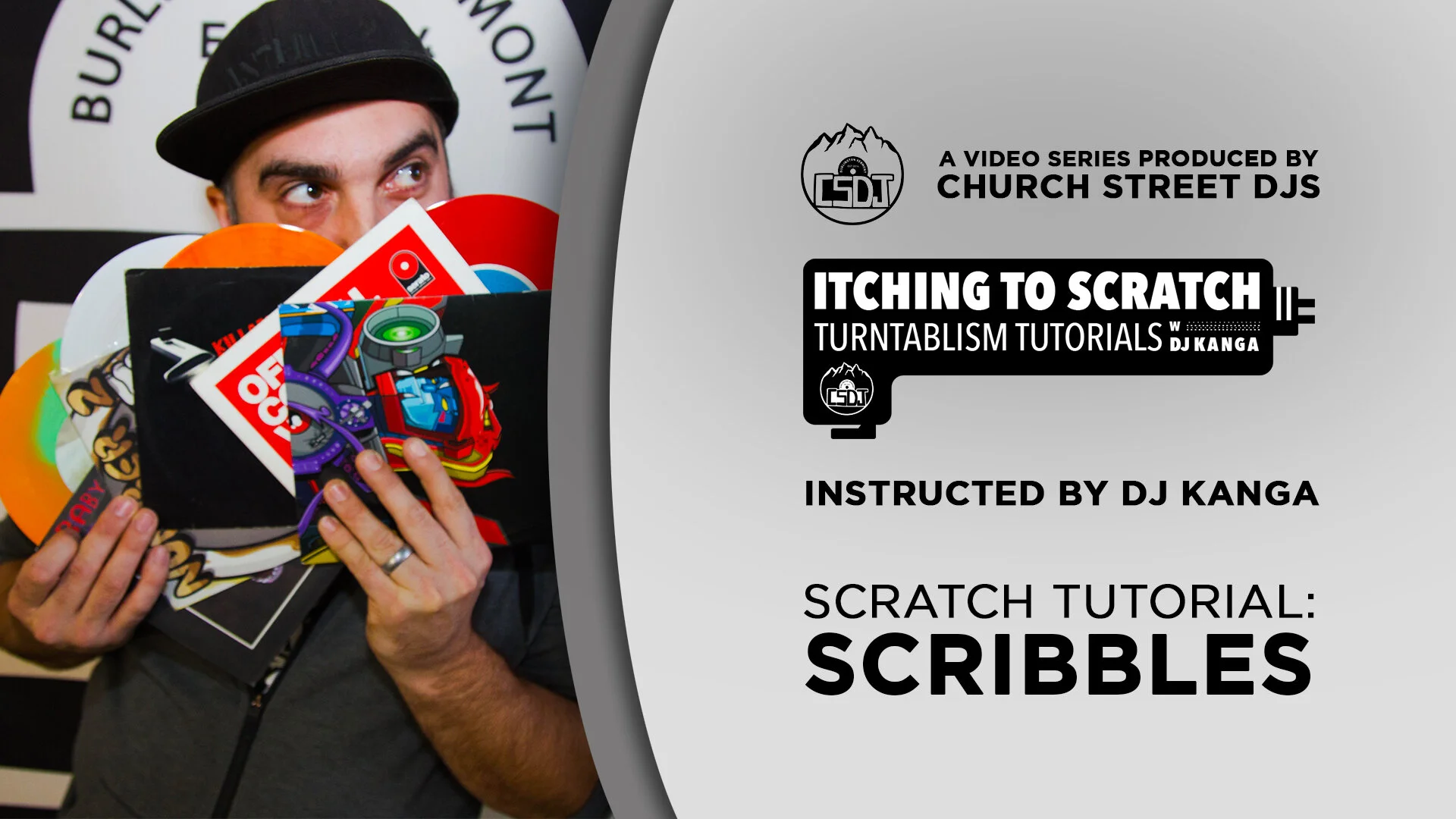






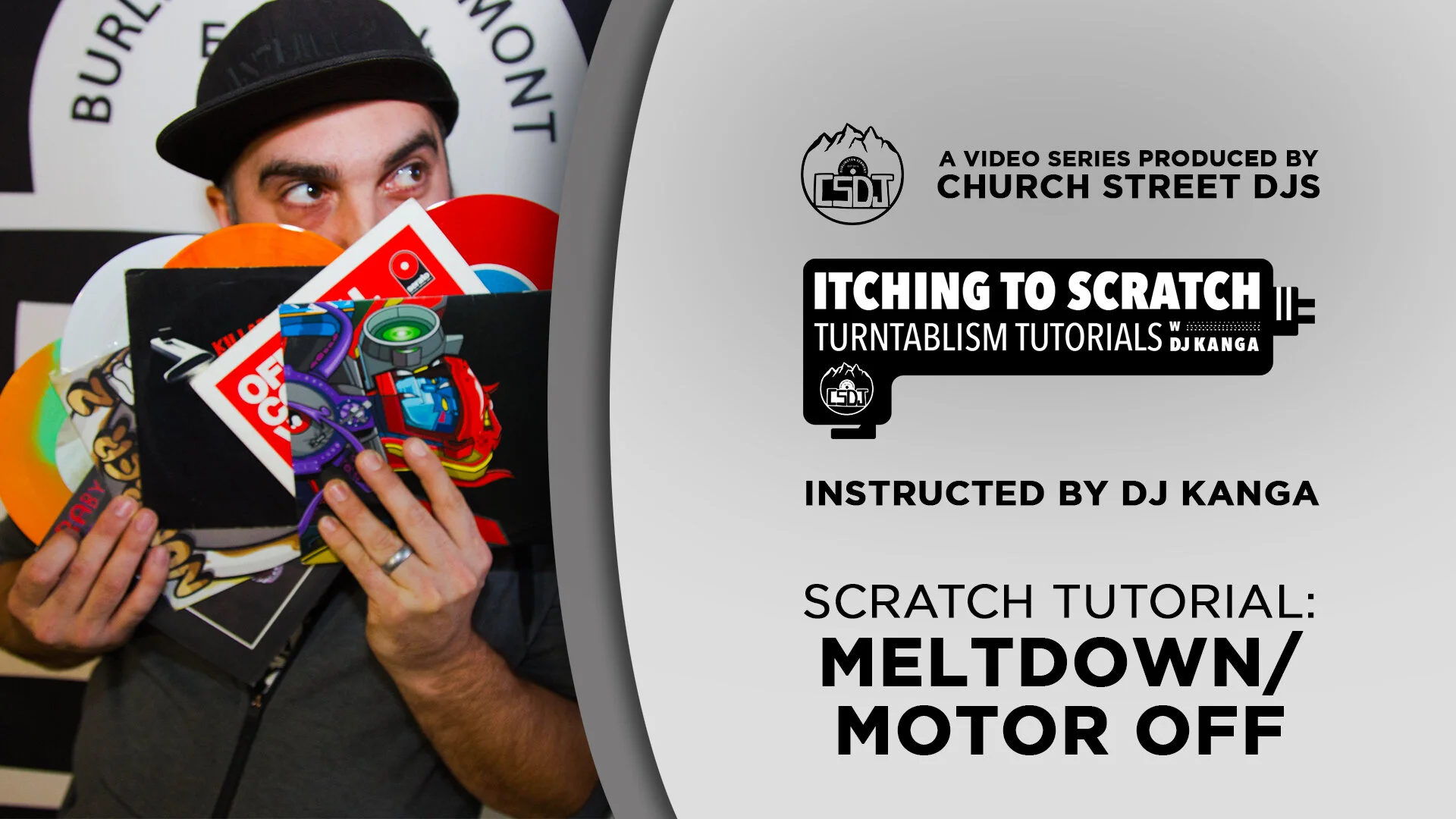


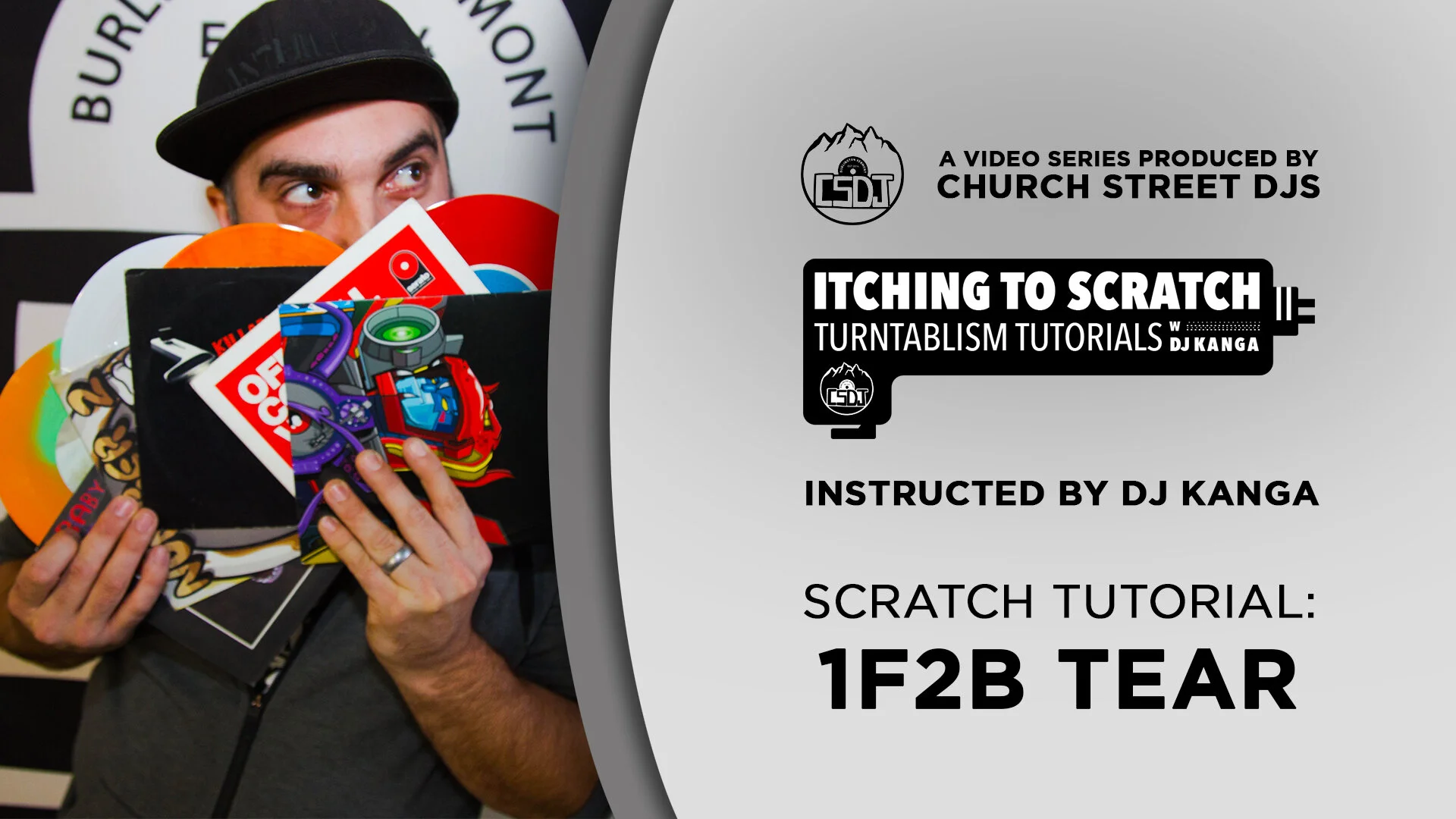
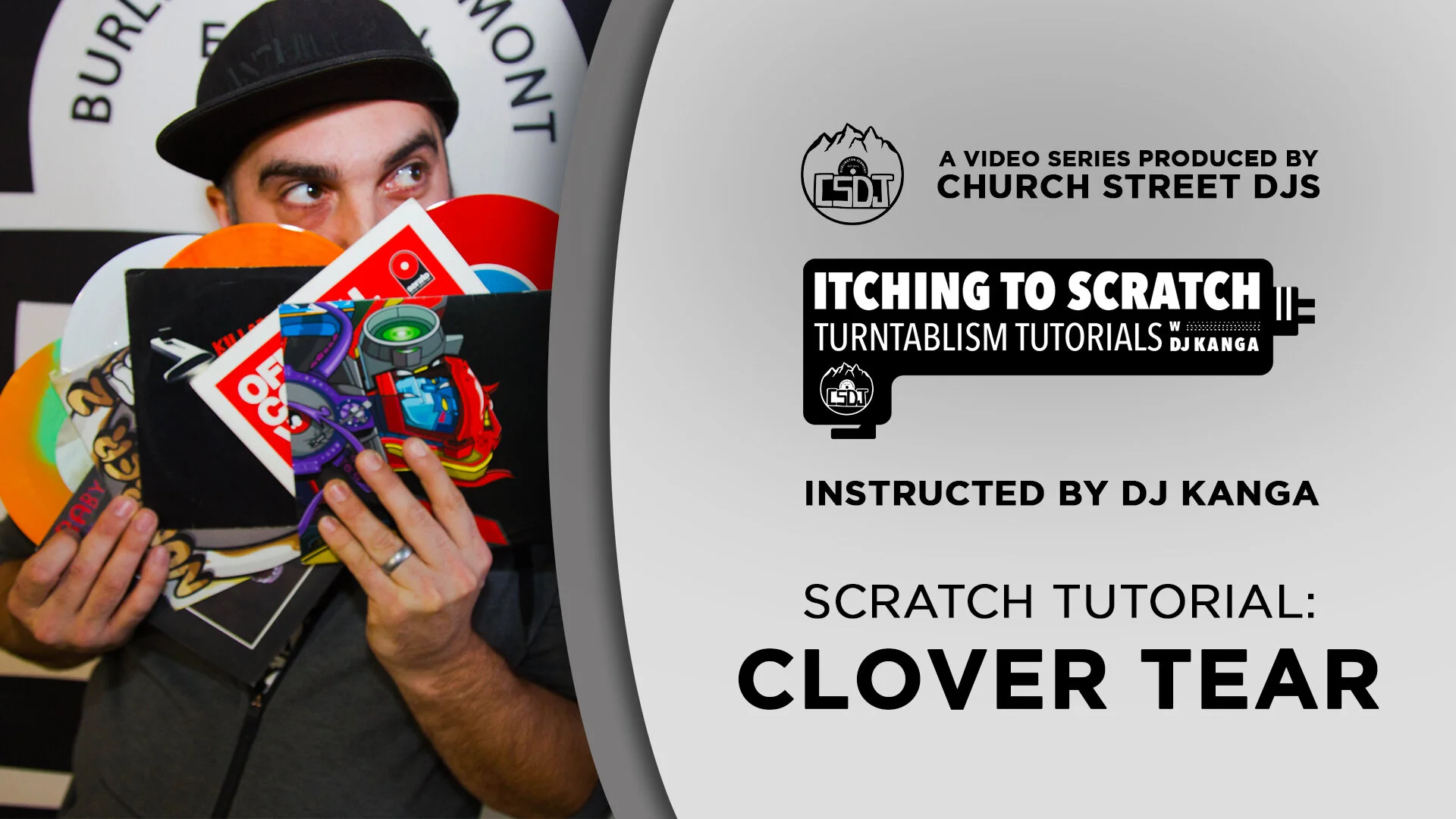
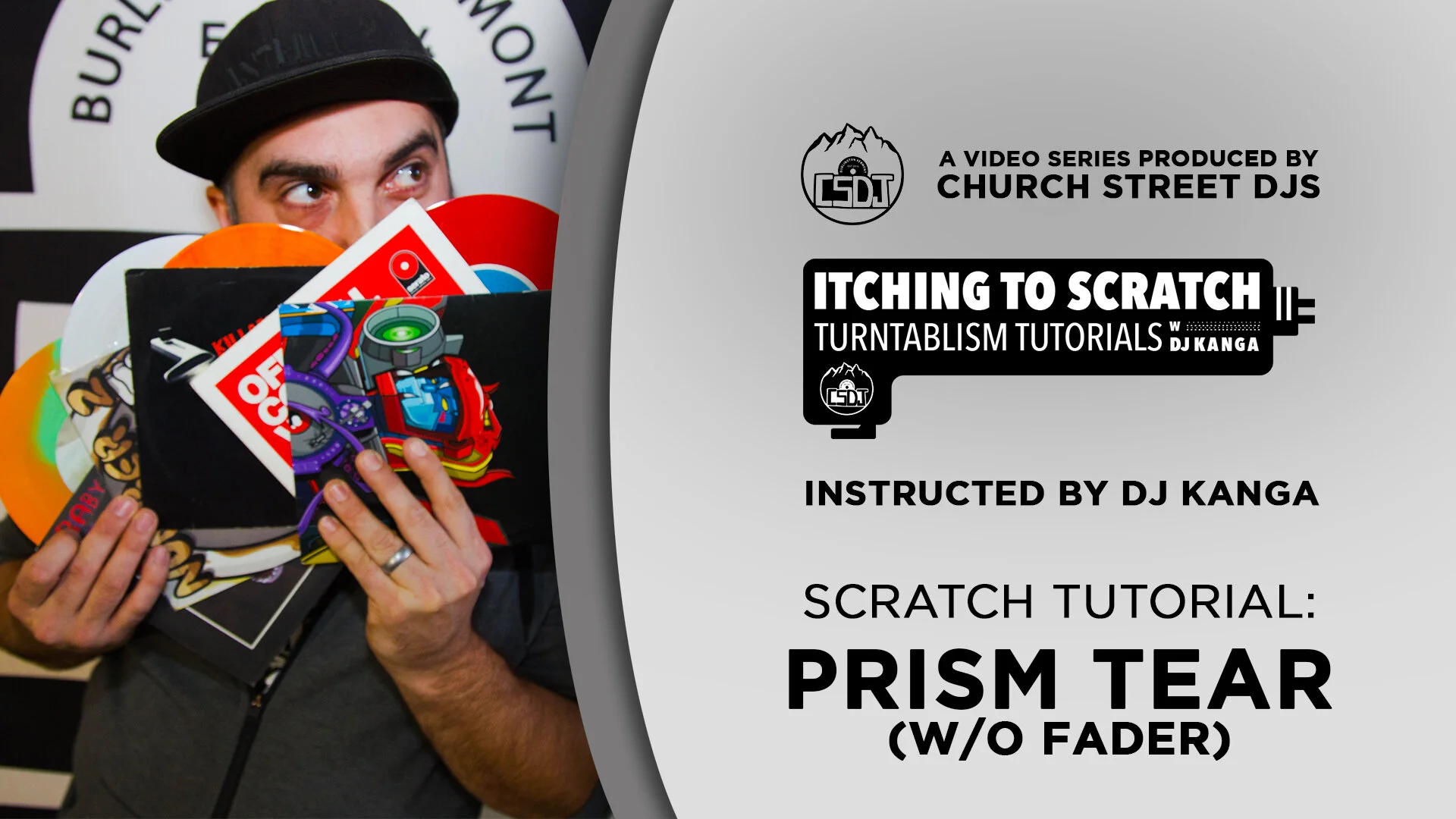
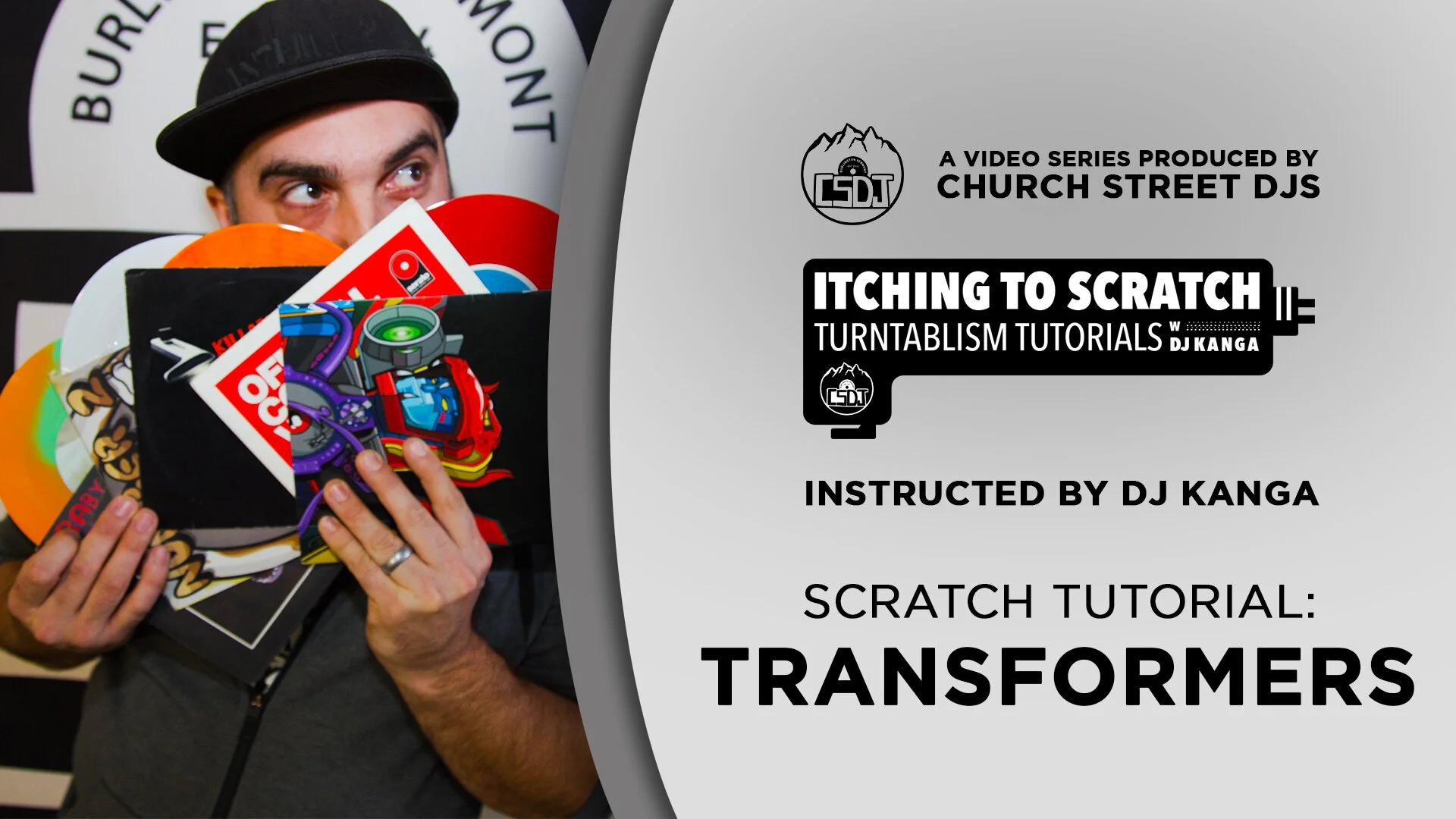

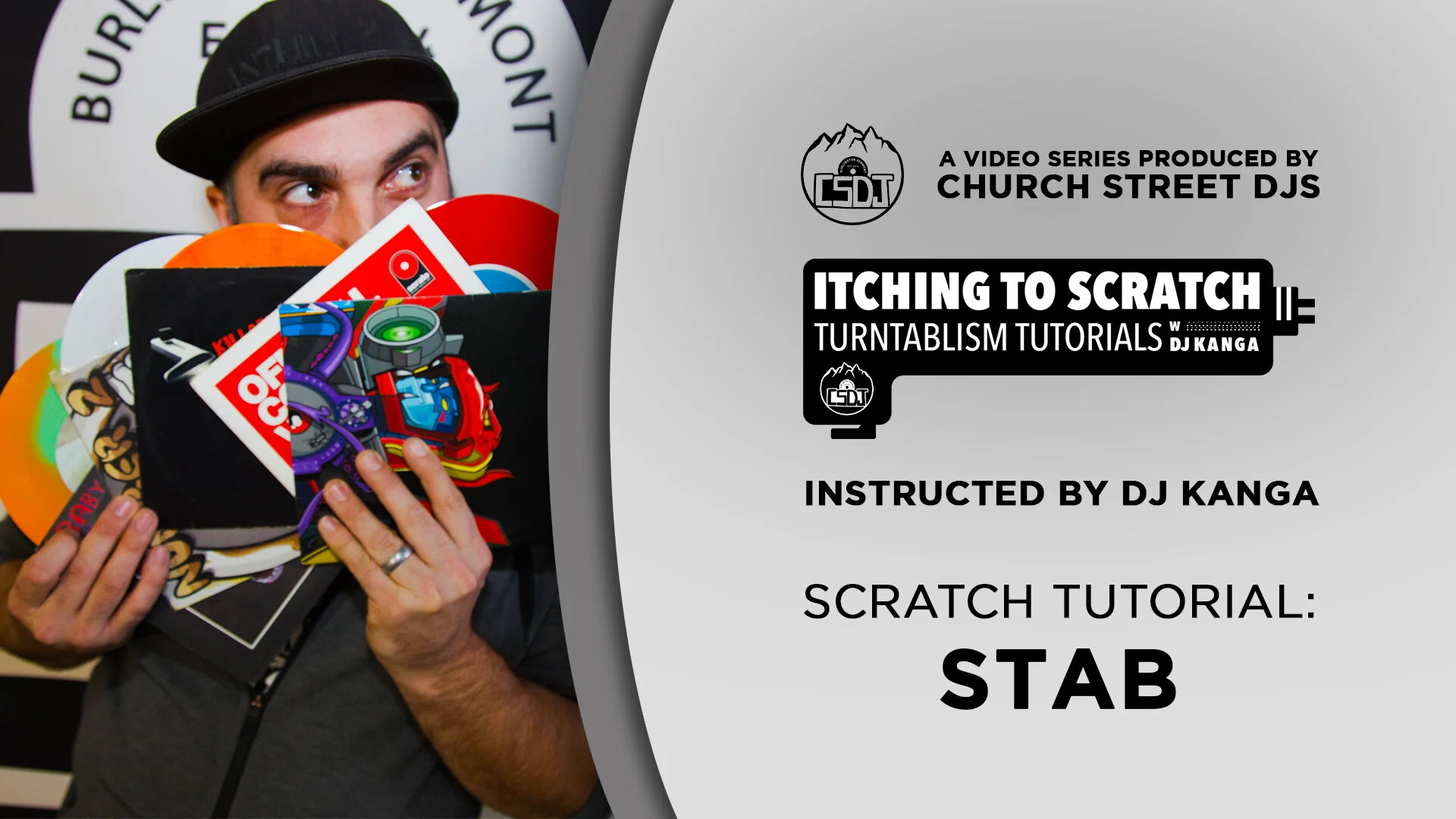

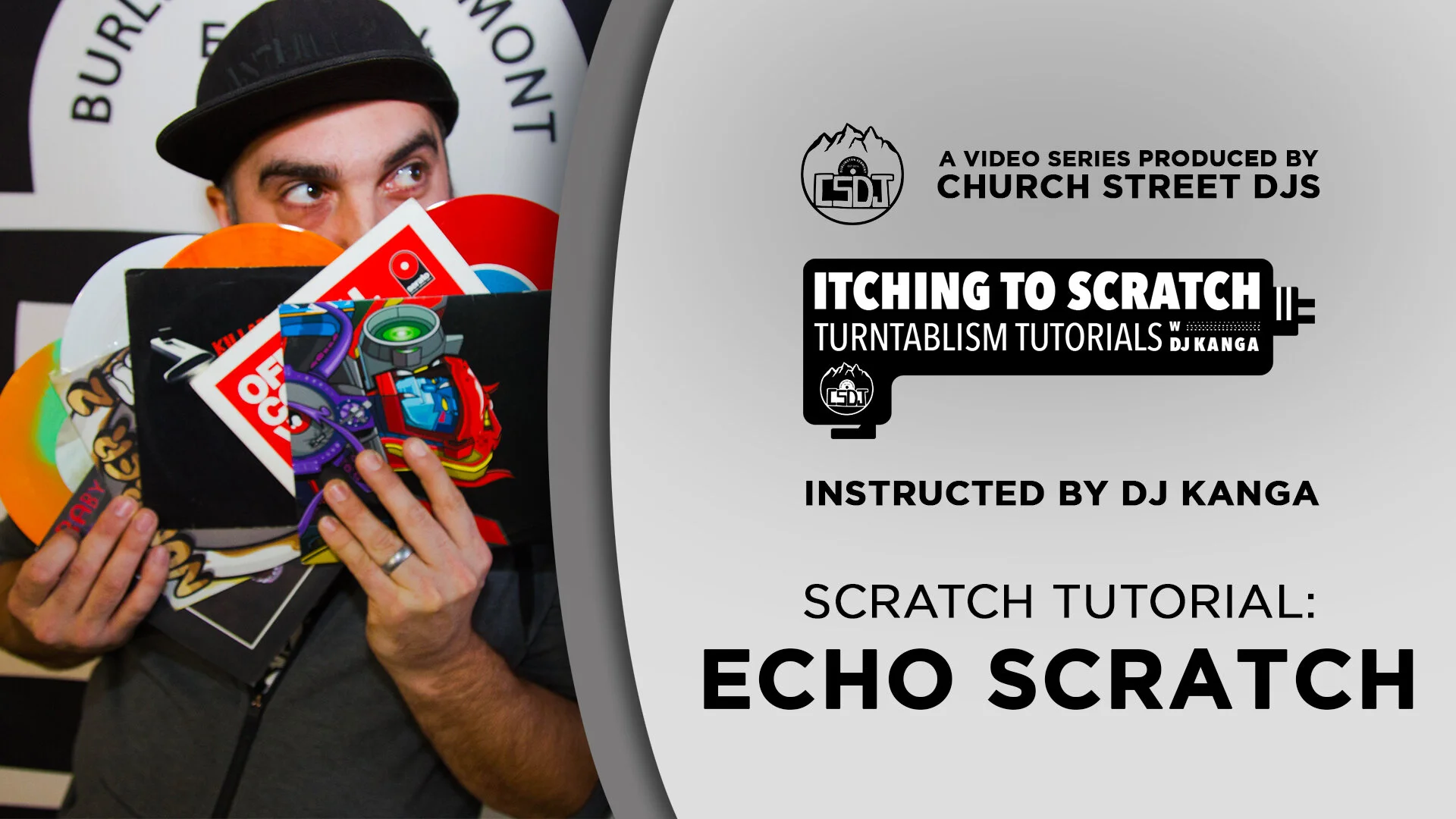

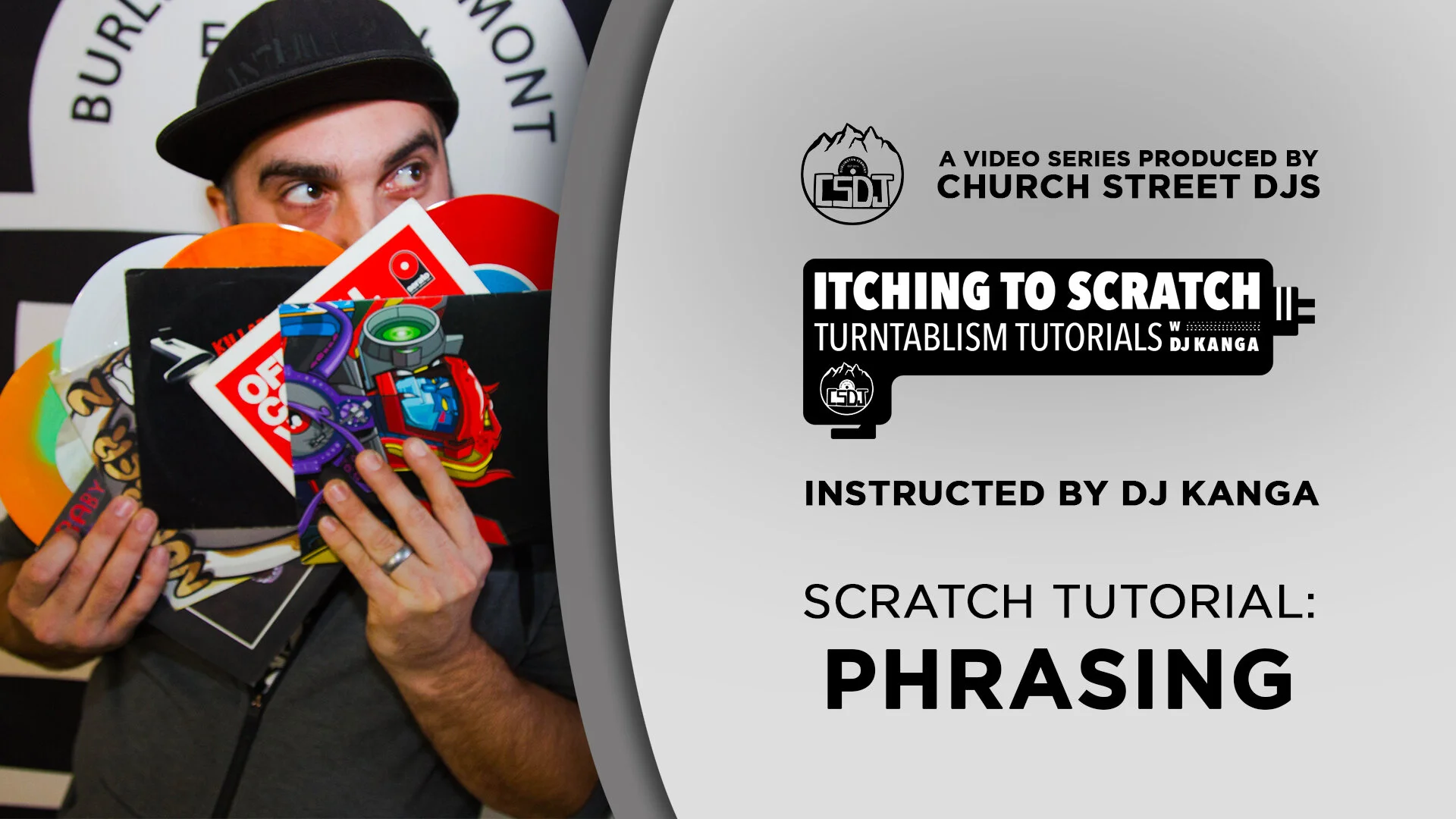

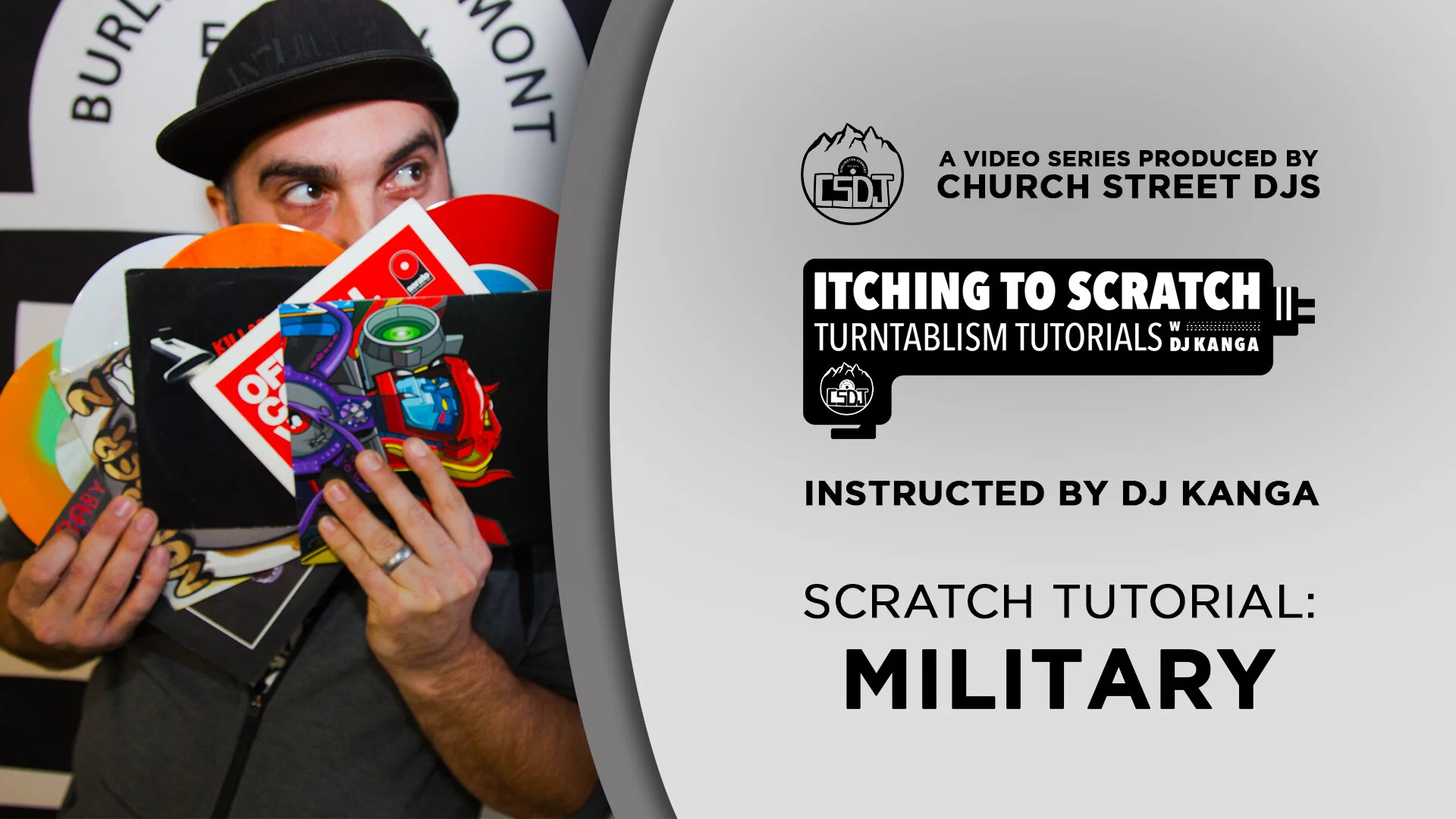



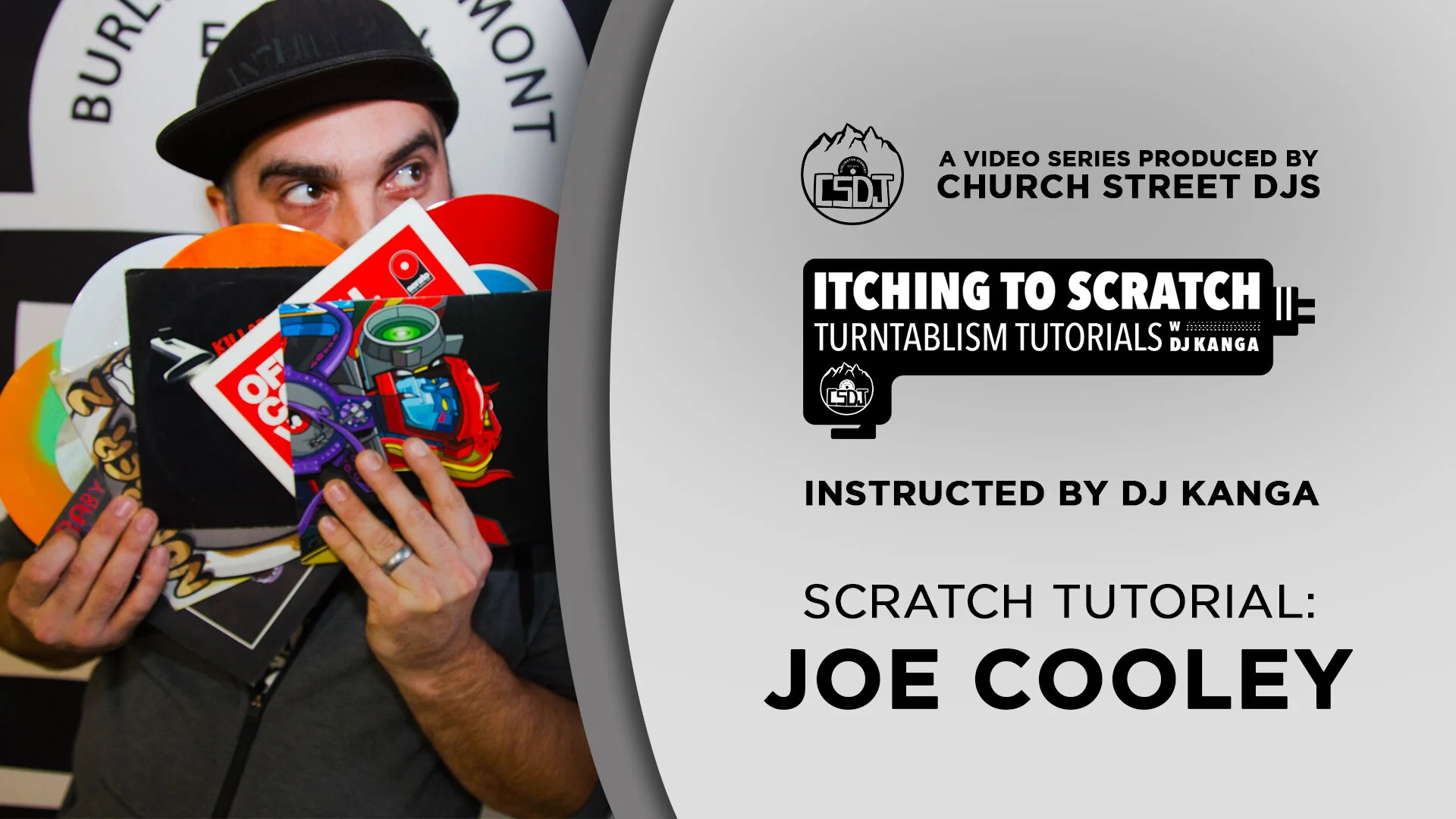

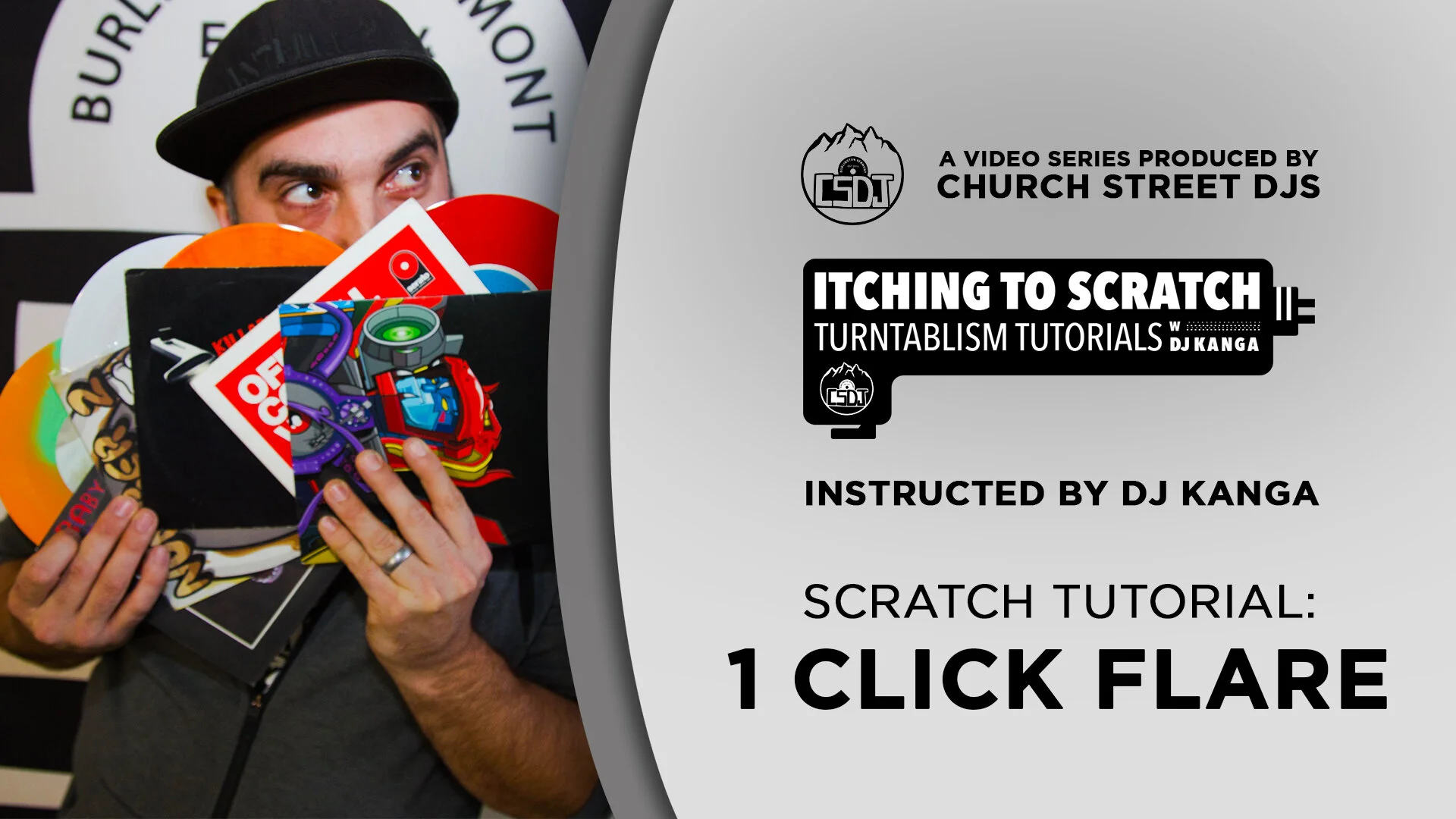
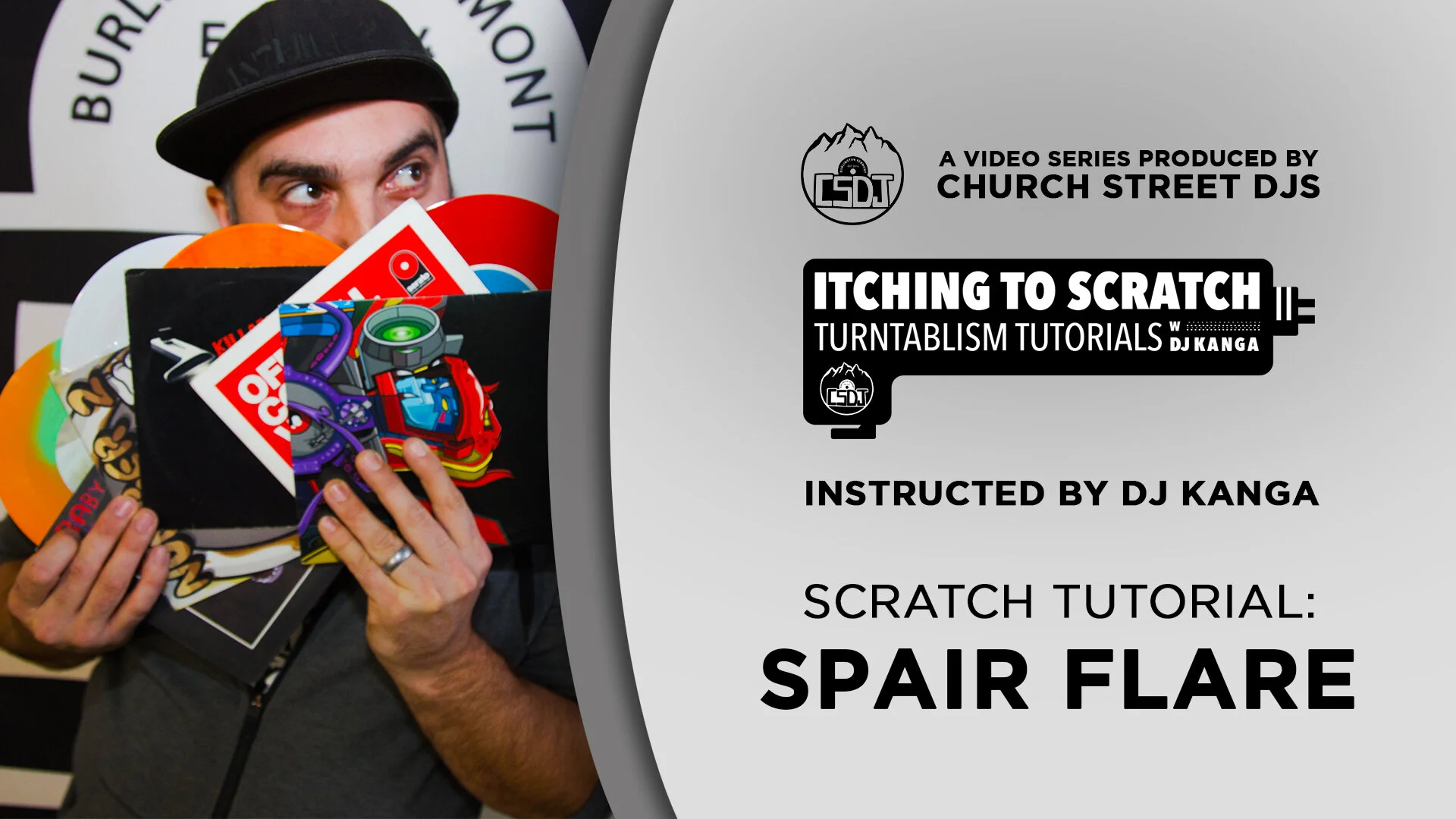
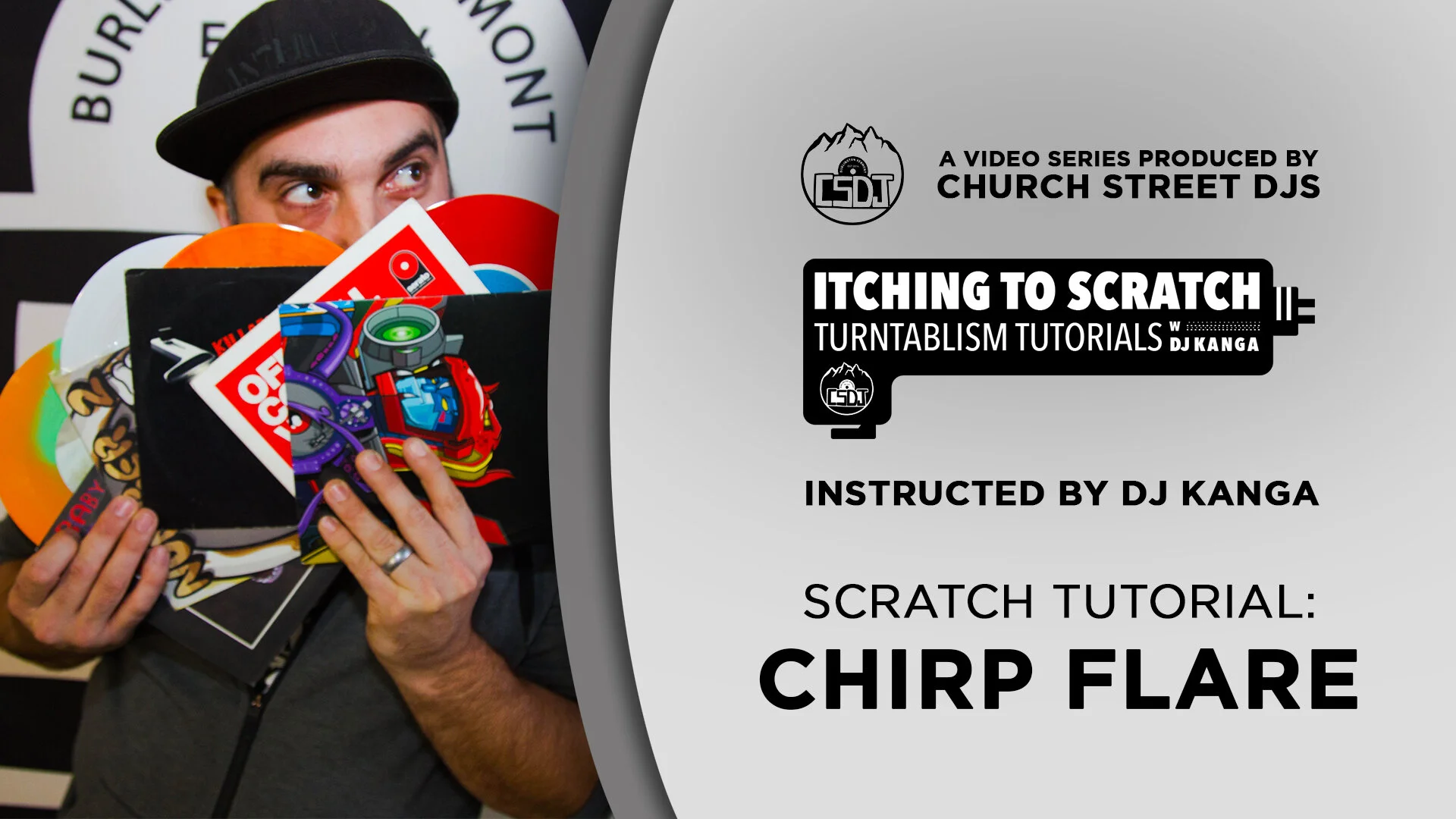

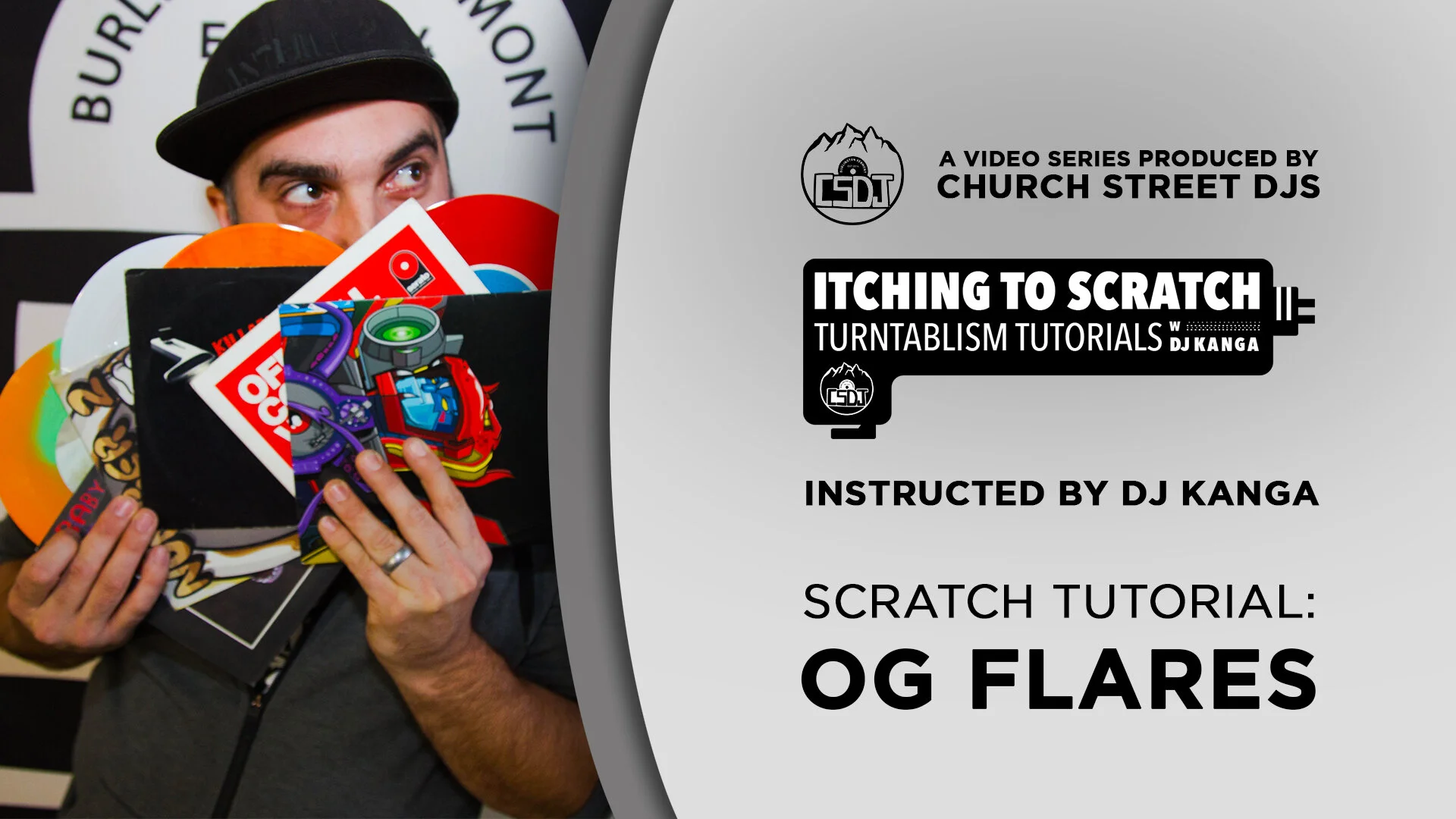






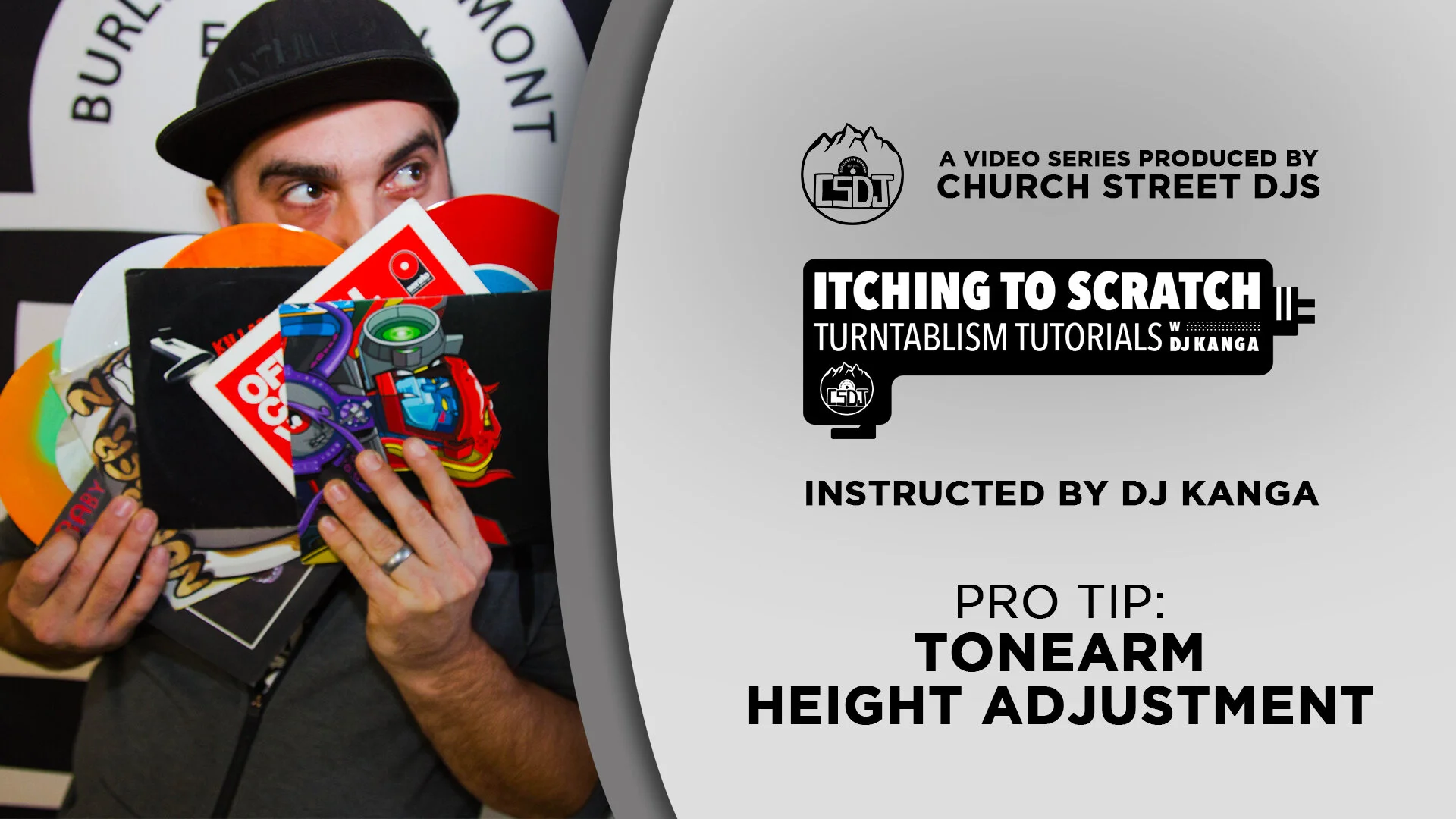
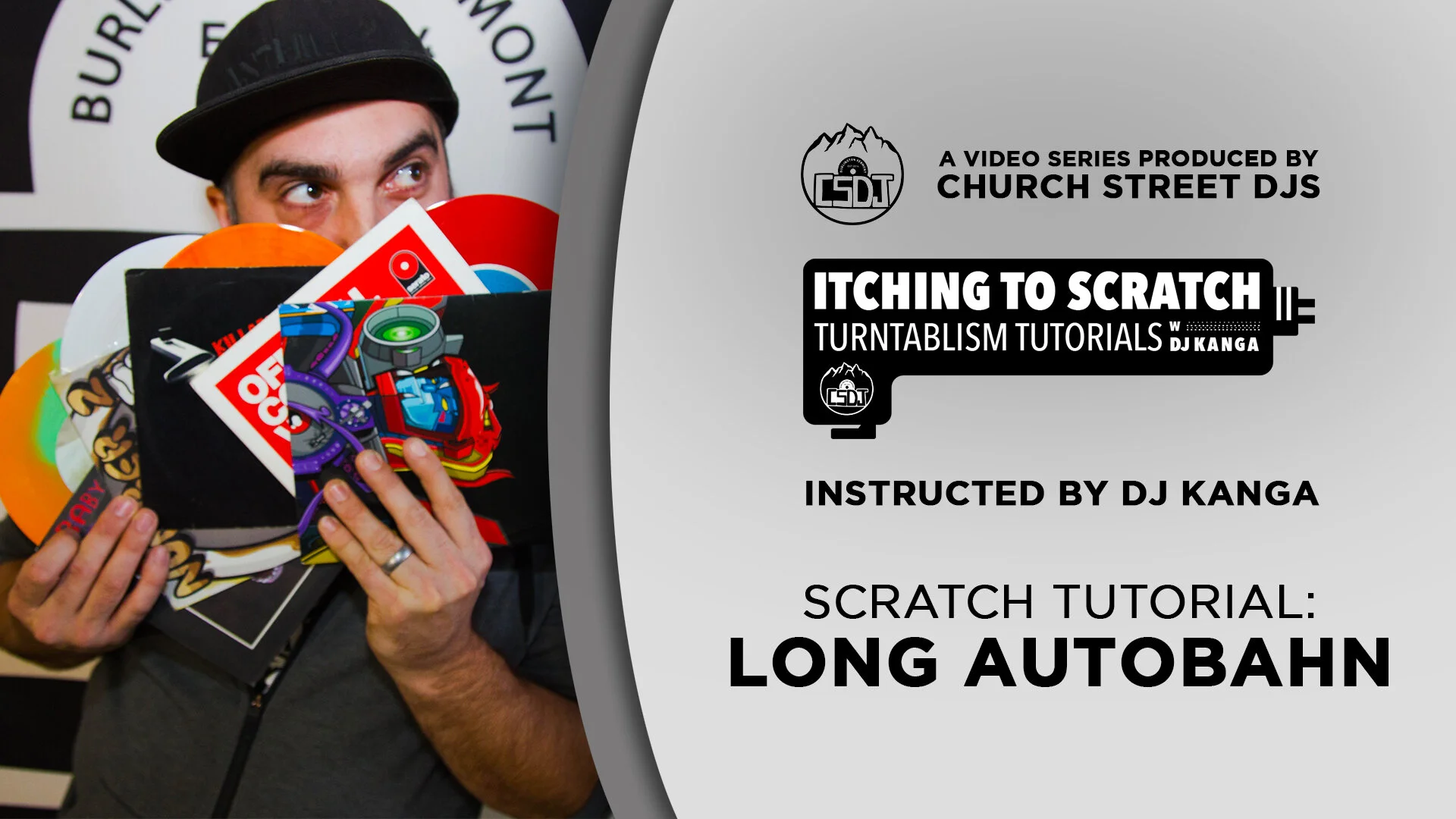
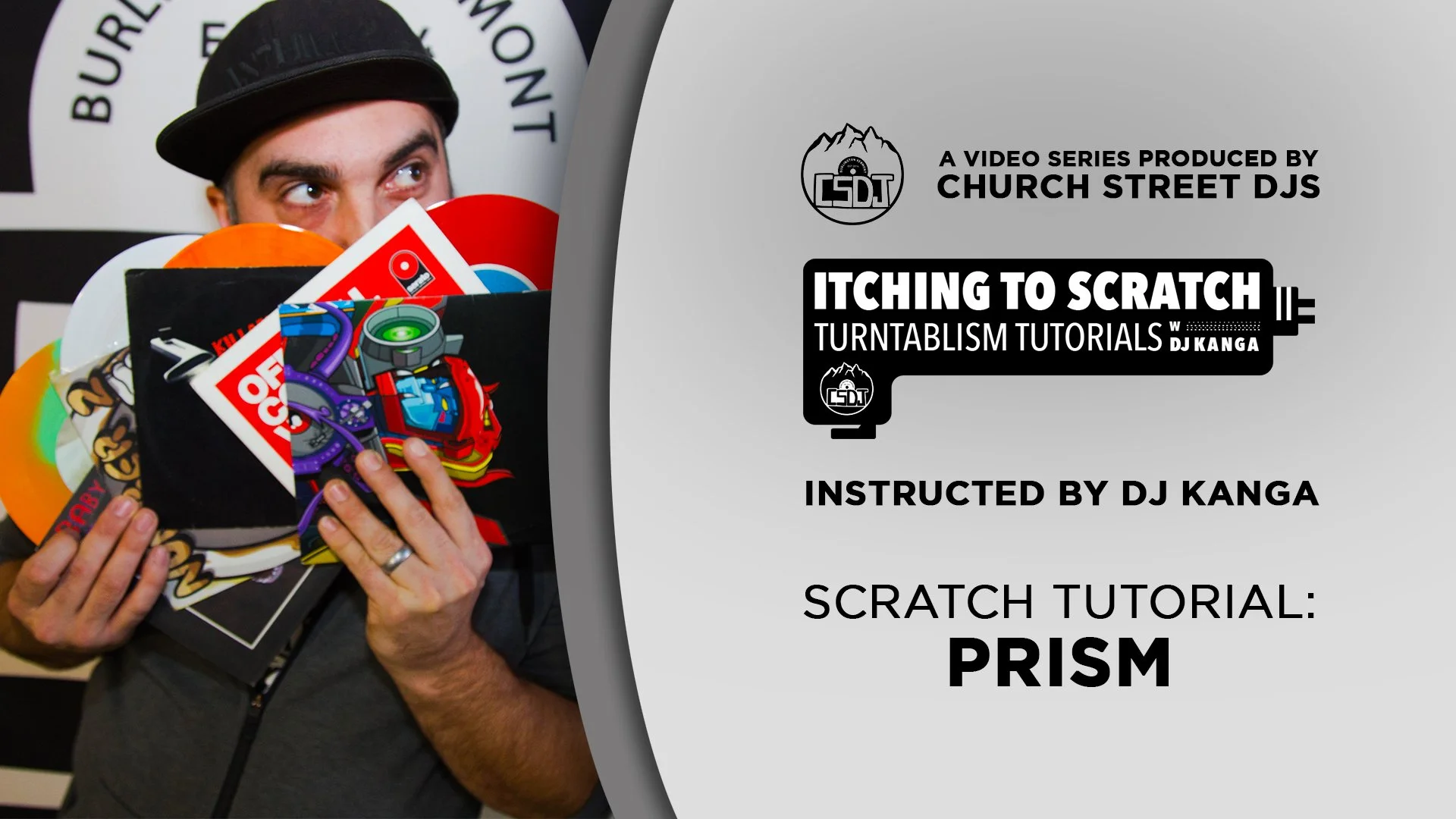
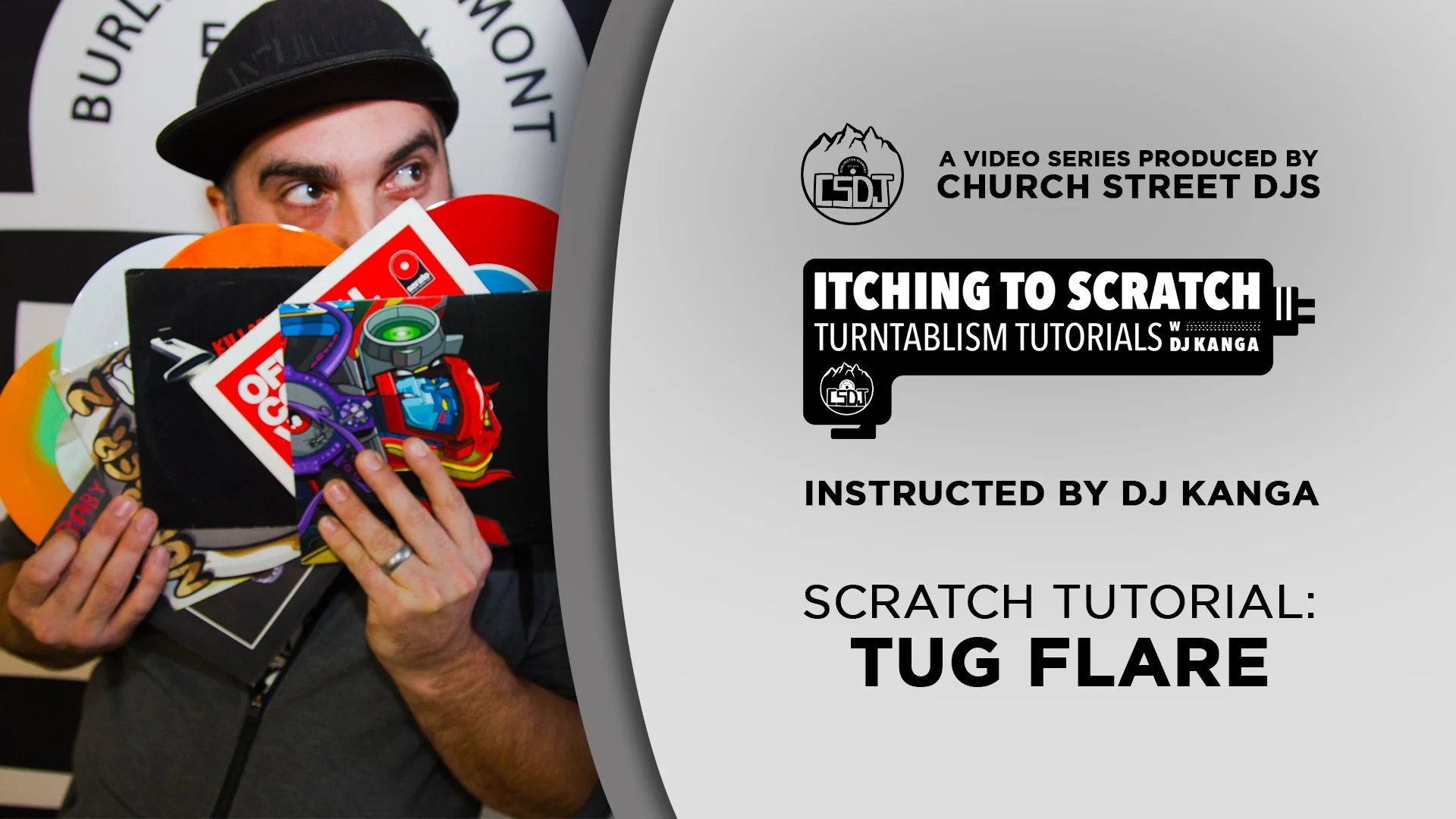

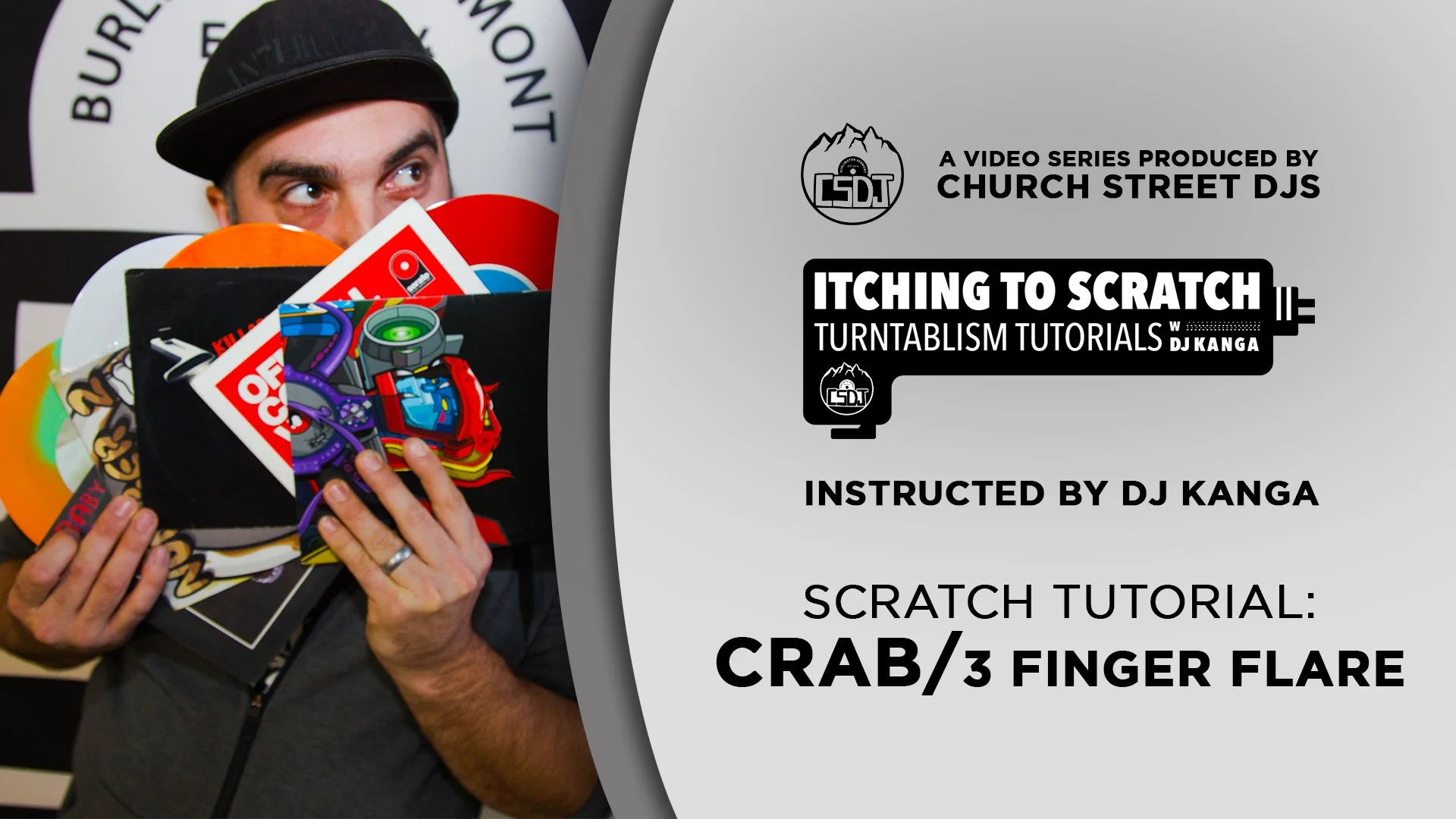


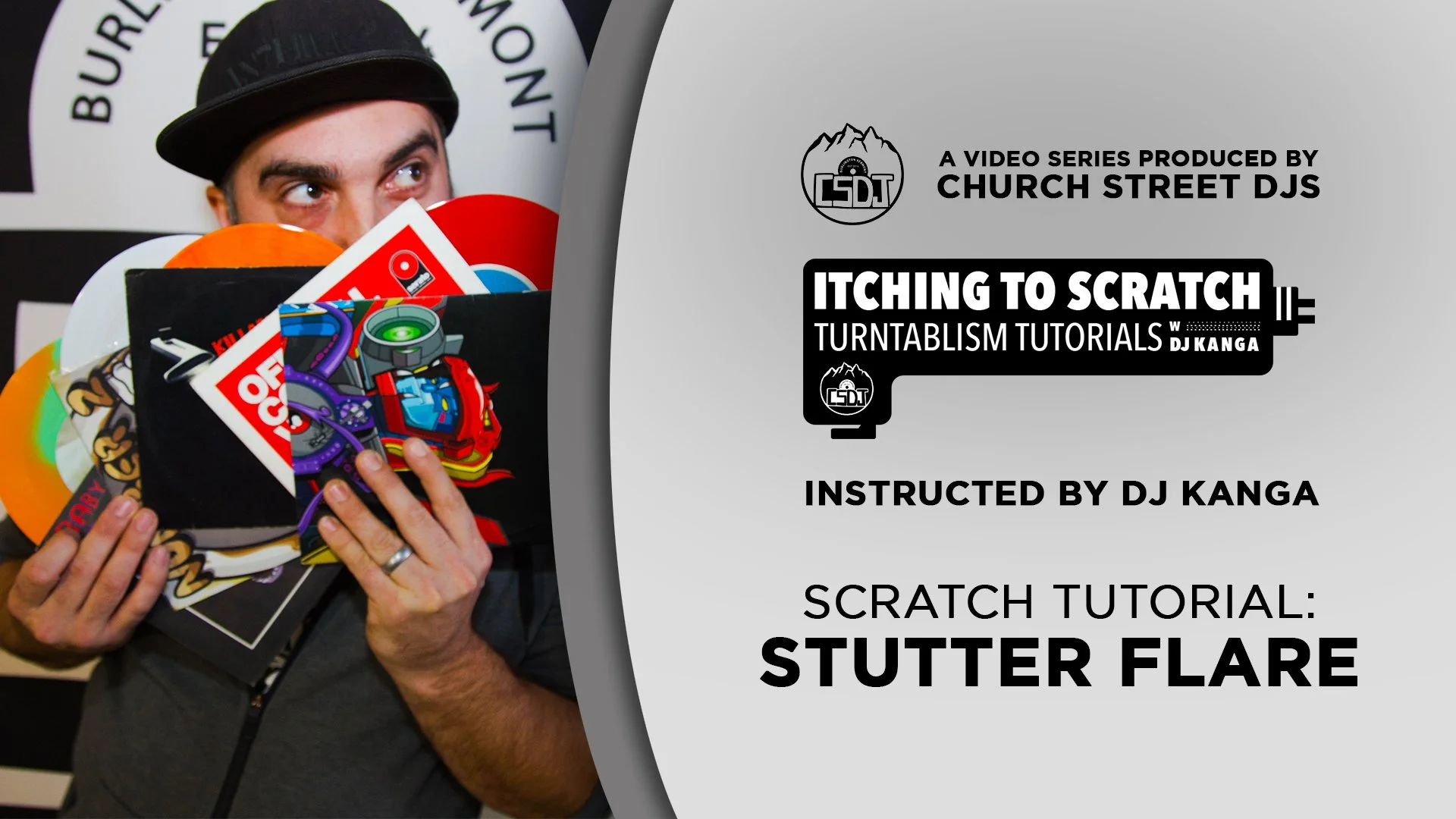




This is the essence of all scratching. Every technique and pattern starts here. Try basic movements, moving the record back and forth to the beat of the music. Experiment with different speeds and lengths…. fast and slow, long and short, as well as using different scratch samples to help understand different approaches. Baby scratching is all about learning and experimenting, just like a baby!